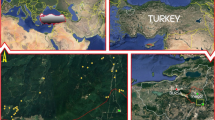Abstract
Over the years farmers of Japanese descent in the Brazilian Amazon have planted indigenous trees that yield various products and services: fruit, seeds,bark, latex, oil, and shade and wind breaks for understory crop plants. Production of timber is often the intended end use of such planted trees. Long-term growth performance of these trees nevertheless has not been well documented. The authors constructed 65-year growth curves for nine indigenous tree species based on measurements of diameter at breast height (dbh), height, and tree age data provided by farmers in the Brazilian State of Pará. An index of wood prices used to calculate state stumpage taxes was then applied to mean stem wood growth curves to produce price curves. These price curves estimate both present value of standing timber, and the value added from annual growth of standing timber in the agroforestry systems studied. The results of this study provide local farmers with a tool to estimate potential annual income from the growth of their trees, and a basis for planning timber harvest rotations. This study's approach may be applicable in other parts of the tropics, where growth information about indigenous trees commonly used in agroforestry is lacking.
Similar content being viewed by others
References
Baas P. and Vetter R.E. 1989. Growth Rings in Tropical Trees. IAWA Bull 10: 95–174.
Bormann F.H. and Berlyn G. 1981. Age and Growth Rate of Tropical Trees: New Directions for Research. Yale University, New Haven, USA, 137 pp.
Condit R., Hubbell S.P. and Foster R.B. 1993. Identifying fast-growing native trees from the Neotropics using data from a large, permanent census plot. For Ecol Manage 62: 123–143.
CPATU 1996. Local climate record for Tomé-Açu., Brazil (unpublished).
Falesi Í.C., Santos W.H. dos and Vieira L.S. 1964. Os Solos da Colônia Agrícola de Tomé-Açu. IPEAN, Belém, Brazil, 93 pp.
Ichibangase Y. 1934. Amazon Chihô Ishokuminchi Jôkyô. Japanese Ministry of Foreign Affairs, Tokyo, Japan, 108 pp.
Ikushima J. 1959. Amazon Ijû Sanjûnenshi. São Paulo Shinbunsha, São Paulo, Brazil, 178 pp.
Pará State 1998. Boletim informativo unificado de preços mínimos de mercado do produto madeira II para 3 a RF, 4 a RF, 5 a RF, 6 a RF, 10 a RF e 13 a RF. In: Anexo do Diário Oficial do Pará 1998/07/10. Governo do Estado do Pará, Belém, Brazil, pp. 9–10.
Somarriba E.J. and Beer J.W. 1987. Dimensions, volumes and growth of Cordia alliodora in agroforestry systems. For Ecol Manage 18: 113–126.
Staniford P. 1973. Pioneers in the Tropics: The Political Organization of Japanese in an Immigrant Community in Brazil. University of London/The Athlone Press, London, UK, 201 pp.
Subler S. 1993. Mechanisms of Nutrient Retention and Recycling in a Chronosequence of Amazonian Agroforestry Systems: Comparisons with Natural Forest Ecosystems. PhD Dissertation, The Pennsylvania State University, State College, USA.
Subler S. and Uhl C. 1990. Japanese agroforestry in Amazonia: A case study in Tomé-Açu, Brazil. In: Anderson A.B. (ed.), Alternatives to Deforestation: Steps toward Sustainable Use of the Amazon Rain Forest. Columbia University Press, New York, USA, pp. 152–166.
Taketa G.K. 1982. Experiências práticas de consórcio com plantas perenes no município de Tomé-Açu, Pará. In: Simpósio sobre Sistemas de Produção em Consórcio para Exploração Permanente dos Solos da Amazônia. EMBRAPA-CPATU, Belém, Brazil, pp. 213–226.
Yamada M. 1999. Japanese Immigrant Agroforestry in the Brazilian Amazon: A Case Study of Sustainable Rural Development in the Tropics. PhD Dissertation, University of Florida, Gainesville, USA.
Author information
Authors and Affiliations
Corresponding author
Rights and permissions
About this article
Cite this article
Yamada, M., Gholz, H.L. Growth and yield of some indigenous trees in an Amazonian agroforestry system: a rural-history-based analysis. Agroforestry Systems 55, 17–26 (2002). https://doi.org/10.1023/A:1020264814888
Issue Date:
DOI: https://doi.org/10.1023/A:1020264814888




